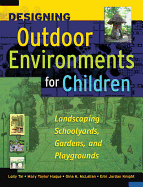 |
| Click to learn more! |
The Toronto Star published a fascinating article about the Monarch butterfly, which is in sharp decline. It describes how environmental groups across Canada and the world are stepping up efforts to increase the Monarch's population. The article coincides with the philosophy of Create A Wildlife Friendly Yard (CWFY), in that we can all create wildlife spaces in our 25,000,000 U.S. yards. CWFY believes that suburban and urban wildlife-friendly habitats can be created in city parks, school yards, hospital grounds, cemeteries, individual residences, and vacant lots. Our next generation can still enjoy a healthy interaction with nature.
The Star article describes, in detail, this international species of concern. The monarch butterfly is like the canary in the coal mine of climate change and conservation, according to Maxim Larrivée, a University of Ottawa professor who developed an online database of butterfly observation. “The monarch is a huge flag bearer for conservation, education and science. The impact it has on advocating or teaching aspects of science to young kids is enormous,” he said. But they also have an important role in nature.

It is normally a sign of bad things to come for the rest of biodiversity when their numbers are affected, Larrivée said. From a climate and habitat perspective they are tied to, and respond much faster than other groups of organisms to changes in their habitats. Damage to ecosystems are reflected faster in insects like butterflies in general.
The migrating Monarchs face decreased habitats in the Michoacan Mountains, a small mountainous area of central Mexico where they spend their winters. The mountainous habitats are decreasing due to deforestation caused by climate change. “They’re not getting the amount of butterflies they should each year in Mexico,” said Jorge Rickards, conservation director with the World Wildlife Fund. He runs a program that has successfully curbed deforestation by local owners through programs that pay them for maintaining the land. But bad weather conditions caused by climate change are also taking their toll on the region. He says conservation efforts focused on providing habitats is necessary.
 |
| Click to learn more! |
Larivee said community conservation efforts can only have a positive effect on their numbers. “It can’t hurt,” he said, because the popular monarch gardens popping up provide nectar and host plants that increase the likelihood of better survival rates for the butterflies throughout their life cycle.
The migrating patterns of the butterflies are also changing. Monarchs made it to Edmonton this year, which is the furthest North West they’ve been in recorded history. Efforts in the city are a little more ad hoc. Local butterfly enthusiasts are planting milkweed and flowers to help them move through their life cycle, and prepare to head south again in the fall.
“The flower part is easy,” said John Acorn, University of Alberta professor and butterfly expert. “The real trick for the ones that come this far north and west is for them to find milkweed plants for the larvae to develop on.” Alberta has some native milkweed, but not as much as in Ontario.
“This is all new to us,” said Acorn. There will be a concerted effort to help conserve them if they continue to return, but there wasn’t a plan in place before the butterflies arrived because no one knew they were coming. On Prince Edward Island, the Bedeque Bay Environmental Management Association has launched a community project to begin this effort. They blame the decrease in population on fewer habitats and are encouraging community members to grow gardens that will help feed the butterflies. They’re called pollinator gardens and help not just butterflies, but bees and other pollinating insects.
They’re encouraging gardeners to plant milkweed, which is a poisonous plant that the monarchs need to lay eggs, and feed young caterpillars before they grow into the orange and black winged insect so many North Americans are familiar with. Plants that flower throughout the growing season are also recommended. Or planning a garden so there are plants growing in succession throughout the summer and into the fall.
 |
| Click to learn more! |
“It does envelop the whole conservation of all species. They were just a very good poster child to give it all a face,” said Samantha Doucette with the BBEMA. Doucette said it would be very hard for the monarch to become extinct without it hurting other species.
The BBEMA also plans to start a branch of the Monarch Teachers Network in August. The organization works with teachers and students to tag migrating monarchs.
Robert Morton, M.Ed., Ed.S believes urban sprawl can be offset by creating wildlife-friendly spaces in America's 25,000,000 lawns, one yard at a time! Click HERE to learn why. A portion of Ad revenues (10%) will be donated to Monarch Watch, earmarked for their Monarch Waystation program. Do you have a wildlife-friendly space? Please share it! Contact us on the secure Bpath Mail Form.
